#or hadrian
Explore tagged Tumblr posts
Text


Northumberland countryside
Bob Radlinski
#uk#hadrians wall#Winshield Crags#english countryside#curators on tumblr#cottage aesthetic#countrycore
2K notes
·
View notes
Note
Mocking the deer whose severed head you have on the wall is horrible
I fervently hope that if I die, someone mounts my skull on a plaque, decks it out in pearls and crystals, and makes puns about it. Ideal afterlife, tbh
#we respect Hadrian in this house#I'm not vegan and I'm not willing to give this type of argument any creedence when you're not even willing to say it off anon#taxidermy is not meaningfully different from using leather goods unless eye talking about endangered wildlife#which Hadrian isn't.#bush bucks are a species of Least Concern#i adore Hadrian#and while I'm very far from a taxidermy collector#let's not play games pointing fingers about secondhand wild-hunted deer when there's significantly larger problems to look at
889 notes
·
View notes
Text




~ Oracle statue of Aphrodite Arsinoe II.
Period: Hadrian; Greco-Roman Period
Place of origin: Egypt
Medium: Dolomite
#ancient#ancient art#history#museum#archeology#ancient egypt#ancient sculpture#ancient history#roman#archaeology#egypt#egyptology#Egyptian#ancient roman#oracle#aphrodite#Aphrodite Arsinoe II#hadrian#Greco-Roman#dolomite
1K notes
·
View notes
Text
Canon Marauders meet Fanon Marauders
“I will kill him, James. I simply have to kill him. It’s a duty at this point,” Sirius whispers, at breakfast.
James is morally opposed to murder, to say the least, but now when he opens his mouth to automatically tell Sirius he can’t kill people, the Abomination walks into the Great Hall, and James closes his mouth, with a sigh.
He condones it.
“Can you kill me, too, please?” Remus asks, as he watches his counterpart walk behind the Abomination.
“Oh, come on! The Other You isn’t so bad.”
“They’re all bad,” Peter mutters. “Just unbearable to watch.”
They’ve only arrived in this cursed universe the day before, but it’s already too much to suffer.
When Sirius met this universe’ version of himself, he had to be restrained from committing unspeakable violence.
“What’s with the pranks?” James wonders. “Look, they’ve only just entered the Hall and they’ve already pulled a few pranks.”
“You call those pranks?” Sirius sneers. “Those lame jokes?”
“They probably take the ‘prankster’ label too seriously,” Peter bemoans. “And I’m missing again. It’s like I don’t even exist here, like those guys forget I’m their best friend.”
After the Other Sirius, Other Peter was done the dirtiest. He’s much uglier than the real one, far shorter, and so stupid Sirius thinks he shouldn’t even be allowed to attend school.
Not that Other Sirius is smart- oh, no. Other Sirius is a moron, apparently allergic to books.
Remus got an upgrade- he’s now a wise genius to rival Dumbledore, and he spends his days giving people chocolate frogs.
It’s a wonder the Abomination is so thin, with how much chocolate he’s getting from Other Remus.
So thin and short.
“Why am I short?” Sirius growls. “I don’t know mate, it’s like the creator of this universe misremembered our heights and switched them around,” Remus offers, watching his other self, a very tall bastard. He’s even taller than Real Sirius.
Outrageous.
“I could suffer you short,” James says. “But look at him, he’s - why is he so…is that ...nail polish? Gods, what have they done to my Sirius!”
“I asked him if he still has the bike,” Peter whispers. “He said he does, but I mean- he’s so fragile and dainty, how does he even manage that monster bike?”
Sirius shakes his head in horror. “I have to kill him, there’s no way around it.”
The Other Sirius whines in the distance. “MOOOOONY,” he pouts, and that's it, Sirius stands-
“Not here,” James pulls him by his sleeve. “You can’t have witnesses.”
(-)
It takes them a few days to figure out what’s wrong with Other James. At a first glance, he looked normal, compared to the others. Almost unchanged from his real version, if only stupider. But not as stupid as Other Sirius and Other Peter, of course.
A chicken wouldn’t be dumber than those guys.
When they do figure it out, James throws up.
“There, there,” Sirius pats his back. “Breathe, mate. Breathe.”
“I’m fucking your brother! Your brother, Sirius!”
“Oh, no, that is not my brother. That is Other Brother.”
This version of Regulus is apparently not a bigot at all, it’s all just a big misunderstanding. He’s an Animagus, too, somehow.
Sirius actually thinks Other Regulus is an alright lad- nothing like his brother, mind you, but alright, in general.
James throws up again. “Me! With Regulus Black! I’m not even gay! I love Lily, and she loves me-”
“Well, apparently she’s gay, too, in this world.” Remus says, which only makes James cry.
That isn’t so bad, really. Many things are wrong with this universe, but Lily and Dorcas look hot together. Sirius had a wank thinking of them the other night. It’s fine, he tells himself. He’s not betraying James. This Lily is nothing like their Lily back home. This one is like a goddess of beauty here, hair far more vibrant than the Real one, flawless skin and overall perfect in everything she does. Extremely selfless, saint-like, to the point she apparently offered to carry Regulus’ and James’ baby after Hogwarts.
Real Lily would hate her.
She’s still not worse than Other Sirius. Nothing is worse than that. Real Sirius has taken to bullying Other Sirius, daily. Hourly. The Abomination whines about it to Other Remus all the time.
“I want a word,” Other Remus hulks over, ridiculously muscular and, for some reason, with scars on his face.
What the fuck happened to this bloke? Who even is he?
Real Remus slinks back. He was never one for confrontations, their Remus, but apparently this upgraded version is all up for it.
“Listen,” Sirius tells him, because he doesn’t hate the man- sure, he’s not Remus, but he seems like a nice lad. “Why do you put up with that insufferable drama queen? He deserves to hang, and you deserve better.”
“That’s my baby! That’s my Pads,” Other Remus says, suddenly all violent, his eyes turn yellow- what the actual fuck?
But Sirius is already nauseous, stomach turning as soon as he heard ‘baby’ and ‘Pads” coming out of his mouth.
Real Remus cheers from the sidelines as Sirius wipes the floor with Other Remus. The Abomination cries somewhere in the distance, all helpless, until Real James hits him over the head with a candlestick. Other James is too busy sucking Other Regulus’ face to notice anything.
(-)
Other Snape has a split personality, as if someone out there can’t decide if he’s evil reincarnate or a mewling, innocent boy.
It’s jarring to see the shifts, day to day, and Sirius doesn’t know which version he hates more.
He never thought he’d miss Snape, but he does. He misses their Snape, gods damn it, the Real one.
(-)
He finds out his parents- or at least his parents in this world- torture Other Sirius on a daily basis. With the Cruciatus, even.
Other Regulus tells him this, all traumatised.
“Well,” Sirius says, shocked to the core. He almost laughs at the absurdity of it. “To be fair, if I had a son like the Abomination, I’d torture, him, too.”
(-)
Dumbledore is Evil. But stupidly so. Even a random eleven year old saw through his evil plans and humiliated Dumbledore at breakfast. Some smart arse kid, who’s apparently Lord Potter Black Gaunt Slytherin, and talks like an eighty year old politician. Apparently Dumbledore stole his money or something.
“I wonder how Other Voldemort is like,” James says, anxious to consider it.
“I don’t even care,” Peter says. “We should join him. It’s either him, or siding with these lunatics.”
They all nod in agreement. Voldemort can’t be worse- nothing can be worse than Other Sirius and Evil Stupid Dumbledore.
(-)
There’s two Voldemorts.
One is practically a ‘cartoon character’ Remus says. Sirius has no idea what that means.
This Voldemort is Ridiculously Evil.
Insane Bellatrix is his most loyal. For some reason Insane Bellatrix cackles all the time, and mutters about blood and the Cruciatus under her breath. She’s also dressed like a slut.
Real Bella, like the aristocrat she is, would never be caught looking like that in public.
Sirius takes her aside to have a few words with her, and then he finds out apparently she, too, was tortured daily by her parents, like Other Sirius.
“And raped,” she remembers, with a shrug.
Wow, and Sirius thought the Real versions of the Blacks were bad, but these people take the fucking cake.
If the Real Blacks would find out what these Other Blacks are doing to their children, there’ll be hell to pay.
His mum is a right basket case back in his world, insufferable and cruel with her words, unreasonably strict, but if she’d ever find out another version of herself is torturing her children- why, she’d cut that bitch in pieces.
(-)
The second Other Voldemort is some misunderstood good guy with a sob story. He whines about his tragic childhood as much as Other Sirius.
At least this Other Voldemort is still tall, unlike Other Sirius.
“It’s all Dumbledore’s fault,” he ends a monologue. “He made me do all I did. Or-” he checks a list. “Apparently sometimes he simply framed me and I didn’t do anything at all. Also, you can call me Tom, in private,” he invites them.
It’s a tragic state of affairs.
They decide to join Ridiculously Evil Voldemort, simply because he’s the only one that wouldn't protest to murdering everyone. He talks about murder every single day, and Sirius promises him he’ll do anything If he’s allowed to kill Other Sirius.
“Oh, by the way, you should deal with Good Guy Voldemort.”
“With who?”
“You know, the hotter you, the one that’s innocent of all wrongs and calls himself Tom.”
Evil Voldemort has a heart attacks and dies.
(-)
They’re on the run from everyone in that crazy world, when a hooded figure enters their tent.
“Is it you? Is it really you?” the man asks. “Potter? Black? Lupin? Pettigrew?’
“Yes, it’s us.”
The person lowers his hood. It’s Snape. Real Snape. With greasy hair and a large nose, but with intelligent, sharp eyes.
There’s no ‘Victim’ stamped on his forehead, nor is he an evil arrogant bastard, like the Other Snape.
“Fuck, Snivellus! A sane person! I could hug you!”
“I’d rather not,” Snape spits at James. “Alas, I am...relieved to have found you. We need to work together. I came here after you-”
“Of course you did, you berk! You were stalking us, as usually, weren’t you?”
“Yes,” Snape says, unashamed. “I killed the Other me.”
“Good job. I killed the Other me, too,” Sirius boasts. “I took my time with him.”
“I killed Other Lily,” Snape says. “She had to go. She was all ...wrong.”
James sniffles. “She was.”
And then they all sit down, and plan how to kill Good Guy Voldemort and Evil Stupid Dumbledore.
#Sirius Black#james potter#marauders fandom#regulus black#severus snape#wolfstar#regulus x james#canon sirius would destroy Fanon sirius on sight#Lord Hadrian Potter Black Slytherin is at it again and that sneaky Dumbledore took his money#jegulus
871 notes
·
View notes
Text

OSIRIS-ANTINOUS. antinous enters the nile human, and leaves a statue 🪷
#the plants are papyrus sedge and egyptian lotus 🪷:)#my ganymede design actually started out as a cartoonish antinous and just became its own thing lol#antinous#antinous osiris#roman empire#ancient rome#ancient greece#tagamemnon#emperor hadrian#osiris#egyptian mythology#roman mythology#tagging this is tricky
3K notes
·
View notes
Text
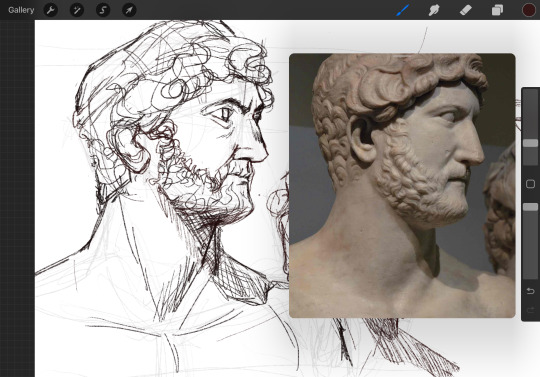

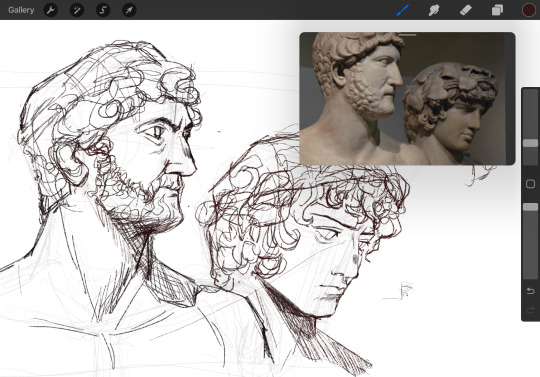
Emperor Hadrian and Antinous study
idk who to do next
#emperor hadrian#roman emperor#roman empire#ancient rome#antinous#sketch#doodle#digital doodles#art study#digital art#artists on tumblr#classics#i love these two#i just want to draw him pretty#hadrian i like how he turned out#i redid it from prev post#my art#my post#my#crisantei
559 notes
·
View notes
Text


Roman Figurine Of A Small Dog, Chesters Roman Fort, Hadrian's Wall, Northumberland
#romans#hadrians wall#ancient cultures#ancient sites#ancient living#archaeology#metalwork#metalworking#figurine#roman britain#chesters roman fort#dog#roman army#small dog#Northumberland
507 notes
·
View notes
Text
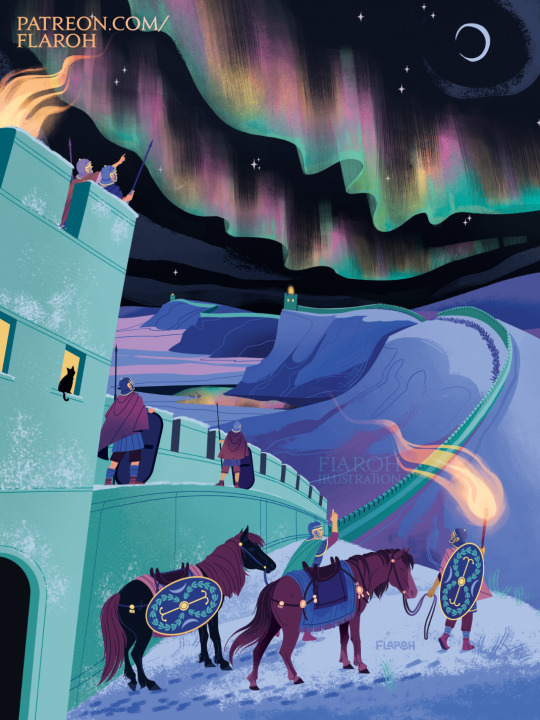
Lights Over Hadrians Wall✨🌌🏛️
December’s illustration is of the Northern Lights (aurora borealis) appearing over soldiers stationed on Hadrian’s Wall. It’s a snowy scene overlooking a vast stretch of the structure, with everyone (including animals) gazing up at the lights as they stand guard or, in the case of the auxiliary cavalry, embark on their patrols.
The past 12 months the aurora borealis been appearing frequently in Hadrians Wall country, which inspired this illustration. Also I’m calling this piece a spinoff of my Saturnalia in Hadrians Wall series, as it’s “same universe” but an anonymous cast of soldiers this time round🏛️
#tagamemnon#flaroh illustration#illustration#roman britain#ancient rome#hadrians wall#northern lights#aurora borealis
751 notes
·
View notes
Text
i made a new version with a lot more ghouls

i hope its okay, that this is posted as a new post, not just a thread to the previous version😅
#fallout#fallout new vegas#fallout 3#fallout 4#fallout set#jason bright#cooper howard#fallout 4 hancock#fallout 3 quinn#dean domino#beatrix russell#oswald the outrageous#fallout gob#fo3 carol#fo3 charon#captain zao#fo4 billy#fo3 murphy#fnv hadrian#arlen glass#kent connolly#fnv harland#fo4 ham#fnv calamity#vault tec rep#raul tejada#edward deegan#kyle edwards#fallout meme#fallout shitpost
904 notes
·
View notes
Text
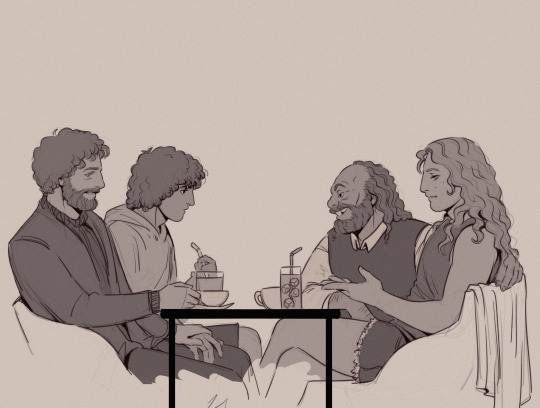
"An emperor, a philosopher, a general and a god walk into a cafe"
Hadrian, Antinous, Socrates and Alcibiades hanging out at a cafe! The modern AU crossover you didn't know you needed! (in honor of @scribl1ta and I hanging out in Athens recently :D )
675 notes
·
View notes
Text

#antinous braschi#antinous#statue#marble#sculpture#statues#ancient rome#roman#roman empire#beauty#splendour#art#europe#european#antiquity#diadem#fruits#dionysus#pine cones#pine cone#history#hadrian
548 notes
·
View notes
Text
Hadrian rambles
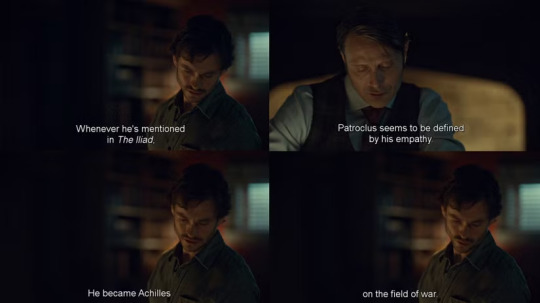
We all know that there was pure love between Achilles and Patroclus. We know that Patroclus feels empathy (like they said above) and that Achilles would destroyed everything for Patroclus

At some point, Hannibal started to see himself and Will as Patroclus and Achilles, like a second change they got after the first time they failed.

This is both romantic and very creepy.
Because... if Will would have died (even because of Hannibal's actions), then Hannibal would lose his human suit once for all.
Something to think about.
210 notes
·
View notes
Text



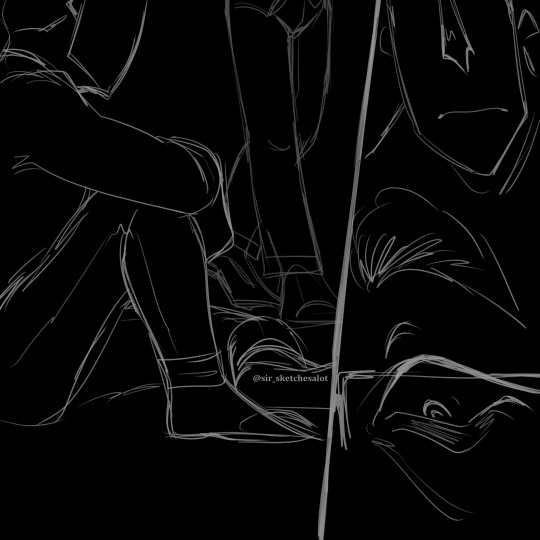



Hrrrm Assimilation AU. What if PAMA got through to the portal network.
#mcsm#minecraft story mode#mcsm hadrian#minecraft story mode fanart#hadrian mcsm#mcsm lukas#mcsm pama
207 notes
·
View notes
Text
yk what I love? that the first text we have written by a woman in England was a Roman woman inviting her best friend to her birthday
#the first words written by a woman were ones of love#she called her 'my dearest soul'#i just love women#so much#roman empire#vindolanda#hadrians wall#ancient history#history#archaeology#art history
4K notes
·
View notes
Text

478 notes
·
View notes
Text

Lil guys part 5- the official and final lil guys page 🥳
...you'll never guess which one of these characters has been growing on me recently...
#mcsm#mcsm ivor#mcsm soren#mcsm harper#mcsm pama#mcsm hadrian#mcsm mevia#mcsm otto#mcsm ellegaard#mcsm magnus#a friend of mine has said their willing to hook me up with a way to make stickers....tempting
180 notes
·
View notes